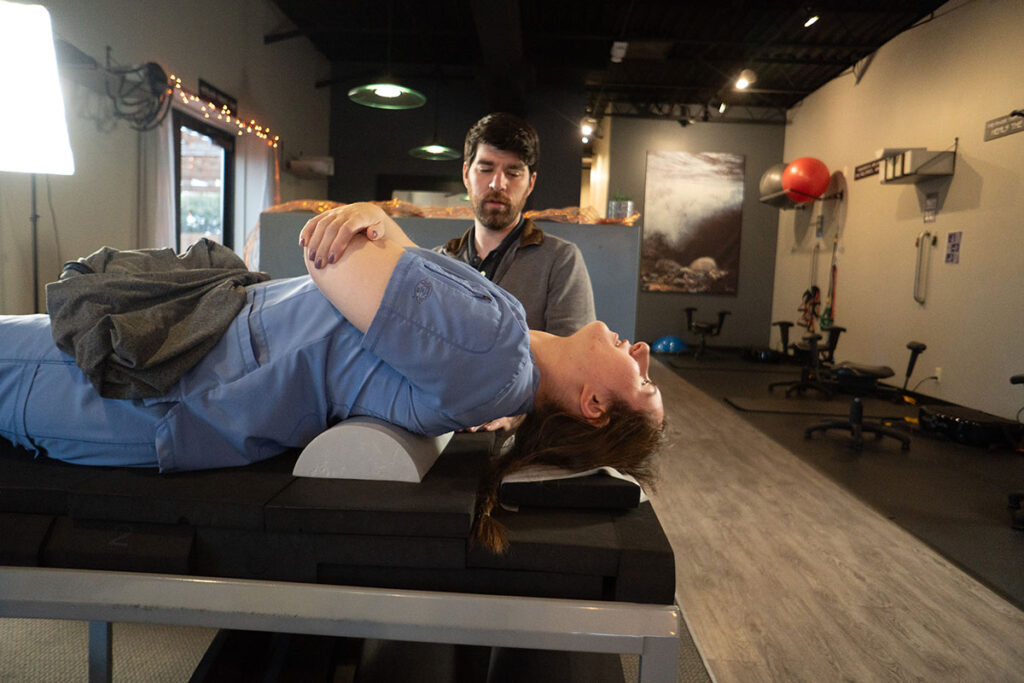Recovering from complex spine surgeries involves a structured rehabilitation program designed to aid recovery, improve mobility, and enhance strength. Adhering to a well-organized post-surgery regimen can help optimize outcomes and reduce recovery time. Here is more information on three key aspects of rehabilitation after spine surgery:
Recovering After Surgery
The first few weeks after complex spine surgeries focus on controlled recovery. During this period, the body heals and begins to adapt. Here are a few helpful tips:
- Rest and Sleep Positions: Lie down in a manner that supports the natural curvature of the spine. Place a pillow under the knees when on your back or between the knees if lying on your side to reduce pressure on the lower back.
- Movement Guidelines: Limit sudden or repetitive twisting, bending, or heavy lifting. Gradual movements support healing and prevent strain on surgical sites. Be sure to follow the guidance from your surgeon.
- Wound Care: Keep the surgical site clean and dry to avoid infection. Follow the surgeon’s instructions on dressing changes and monitoring for signs of infection, such as redness or swelling.
- During this phase, short walks are typically recommended. Walking helps prevent stiffness, supports circulation, and minimizes risks associated with blood clots.
Strengthening the Spine
Physical therapy plays a key role during the rehabilitation process. The aim is to restore strength, flexibility, and range of motion. Here are a few ways to strengthen the spine:
- Core Muscle Focus: Physical therapists design exercises targeting the core muscles. Strengthening these muscles offers spinal support and reduces strain.
- Stretching: Safe, guided stretching improves mobility. Gentle, targeted stretches reduce stiffness around the spine and supporting muscles.
- Low-Impact Aerobic Exercises: Pool therapy or stationary cycling can enhance recovery. Such activities promote circulation and reduce the risk of deconditioning during recovery.
Therapists monitor progress and adjust exercises as needed. Attending therapy sessions consistently contributes significantly to overall improvement.
Adjusting Lifestyle and Goals
After completing initial recovery and therapy, adopting long-term habits can help maintain progress and reduce the risk of future complications. Ergonomic practices are key, such as using chairs and workspaces designed to support proper posture. Avoid slouching and aim for spinal alignment, especially during prolonged periods of sitting.
Regular physical activity is also helpful; incorporating low-impact exercises like swimming, walking, or yoga into your weekly routine can support spinal health and promote overall wellness. Managing weight plays a key role in reducing excess stress on the spine, preventing further issues. A nutrient-rich diet contributes to overall strength and supports tissue recovery. Long-term success is achieved through balanced activity levels and an awareness of body mechanics.
Learn About Complex Spine Surgeries
Rehabilitation after spine surgery involves structured phases of rest, targeted physical therapy, and long-term adjustments to support recovery and spinal health. Rest during the early phase, followed by guided therapy and long-term lifestyle strategies, provides a comprehensive approach to recovery. Be sure to follow any guidance from your surgeon regarding your recovery. For specific concerns or to adapt these steps to unique needs, consult with your healthcare provider to build a personalized plan.

